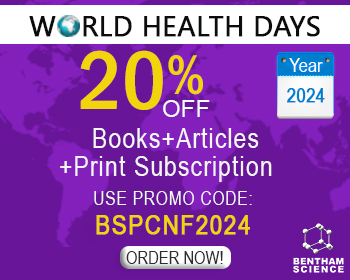Abstract
Quinolines are heterocyclic nitrogen compounds, ubiquitous in nature and largely used as a structural component of dyes, solvent for resins, terpenes as well as during the production of several other chemical stuffs, including pesticides. Quinolines, such as quinine and chloroquine, exhibit various pharmacological properties, acting as antimalarial drugs, antiparasitic, antibacterial, antiviral, antifungal, and anticancer agents, besides being in clinical use for autoimmune diseases. A brief review has been presented regarding the biological effect and clinical use of quinolines and derivatives upon three trypanosomatids agents of important neglected tropical diseases; Trypanosoma cruzi, Trypanosoma brucei spp and Leishmania spp, which trigger Chagas disease, sleeping sickness and leishmaniasis, respectively, also extending to a glance update of their potential application towards other microbes relevant for emerging illness caused by fungi, bacteria and virus, including the pandemic Covid-19.
Keywords: Quinolines, chloroquine, drug discovery, repurposing drugs, Leishmania, Trypanosoma cruzi, Covid-19.
[http://dx.doi.org/10.1016/j.ejmech.2018.10.035] [PMID: 30343191]
[http://dx.doi.org/10.2174/0929867326666190628163633] [PMID: 31264538]
[http://dx.doi.org/10.1590/0001-3765201820170830] [PMID: 29873667]
[http://dx.doi.org/10.4269/ajtmh.20-0290] [PMID: 32323646]
[http://dx.doi.org/10.1111/dth.13380]
[http://dx.doi.org/10.1038/s41584-020-0372-x] [PMID: 32034323]
[http://dx.doi.org/10.1007/s40261-018-0656-y] [PMID: 29737455]
[http://dx.doi.org/10.1186/s42358-020-00134-8]
[http://dx.doi.org/10.1016/S1473-3099(03)00806-5] [PMID: 14592603]
[http://dx.doi.org/10.4269/ajtmh.2005.73.1005] [PMID: 16354802]
[http://dx.doi.org/10.1093/jac/dkv018] [PMID: 25693996]
[http://dx.doi.org/10.1016/j.bmc.2015.06.029] [PMID: 26116178]
[http://dx.doi.org/10.2174/1389557518666181018163448] [PMID: 30338737]
[http://dx.doi.org/10.1016/j.bioorg.2020.103732]
[http://dx.doi.org/10.2174/156652406776055168] [PMID: 16515515]
[http://dx.doi.org/10.2174/0929867324666171023163752] [PMID: 29065822]
[http://dx.doi.org/10.1016/j.ejmech.2015.10.007] [PMID: 26479031]
[http://dx.doi.org/10.1016/j.ejmech.2015.07.018] [PMID: 26218652]
[http://dx.doi.org/10.1016/S0140-6736(09)61422-7] [PMID: 20109925]
[http://dx.doi.org/10.1016/j.jacc.2016.12.023] [PMID: 28231946]
[http://dx.doi.org/10.1093/jac/dkx516] [PMID: 29351667]
[http://dx.doi.org/10.1590/0074-02760140407] [PMID: 25946152]
[http://dx.doi.org/10.1016/j.actatropica.2017.09.017] [PMID: 28941731]
[http://dx.doi.org/10.2147/DDDT.S146521] [PMID: 29317800]
[http://dx.doi.org/10.1016/S0140-6736(17)31510-6] [PMID: 28673422]
[http://dx.doi.org/10.1517/13543784.2014.954035] [PMID: 25409760]
[http://dx.doi.org/10.4269/ajtmh.2005.73.871] [PMID: 16282296]
[http://dx.doi.org/10.4269/ajtmh.2001.65.685] [PMID: 11791957]
[http://dx.doi.org/10.1051/parasite/2011182115] [PMID: 21678786]
[http://dx.doi.org/10.1016/j.biopha.2014.08.009] [PMID: 25201056]
[http://dx.doi.org/10.1016/j.biopha.2007.12.006] [PMID: 18249083]
[http://dx.doi.org/10.1016/j.bioorg.2018.12.025] [PMID: 30605884]
[http://dx.doi.org/10.1016/j.bioorg.2018.10.053] [PMID: 30469145]
[http://dx.doi.org/10.1016/j.bmcl.2013.02.054] [PMID: 23518280]
[PMID: 29203485]
[http://dx.doi.org/10.1016/j.bmcl.2018.03.039] [PMID: 29609908]
[http://dx.doi.org/10.1007/5584_2019_428]
[http://dx.doi.org/10.1007/s00044-016-1732-6]
[http://dx.doi.org/10.1038/nrmicro.2017.99] [PMID: 28944770]
[http://dx.doi.org/10.1016/j.micinf.2016.01.002] [PMID: 26806384]
[http://dx.doi.org/10.1016/j.bmcl.2018.12.068] [PMID: 30630718]
[http://dx.doi.org/10.1021/acs.jnatprod.5b00896] [PMID: 26848627]
[http://dx.doi.org/10.1099/0022-1317-4-2-203] [PMID: 4306296]
[http://dx.doi.org/10.1186/1743-422X-2-69] [PMID: 16115318]
[http://dx.doi.org/10.2174/1381612043383791] [PMID: 15320751]
[http://dx.doi.org/10.1186/1743-422X-4-39]
[http://dx.doi.org/10.1089/jir.2014.0038] [PMID: 25321315]
[http://dx.doi.org/10.1128/JVI.00903-12] [PMID: 23015720]
[http://dx.doi.org/10.1128/JVI.00857-07] [PMID: 17913823]
[http://dx.doi.org/10.1016/j.bbrc.2004.08.085] [PMID: 15351731]
[http://dx.doi.org/10.1002/prp2.293]
[http://dx.doi.org/10.1590/S0074-02762013000500010] [PMID: 23903975]
[http://dx.doi.org/10.1002/jmv.24575] [PMID: 27183377]
[http://dx.doi.org/10.1590/0037-8682-0154-2018] [PMID: 29768542]
[http://dx.doi.org/10.1001/jamacardio.2020.1286] [PMID: 32219363]
[http://dx.doi.org/10.1128/AAC.03011-14] [PMID: 24841269]



























